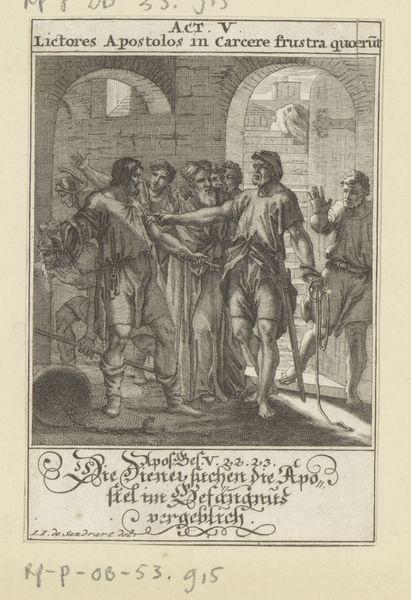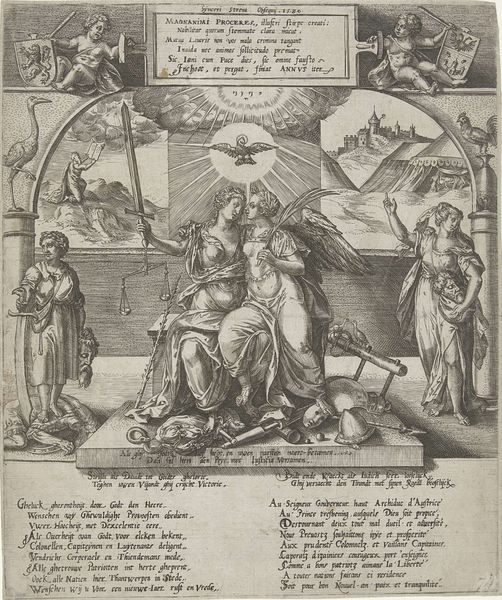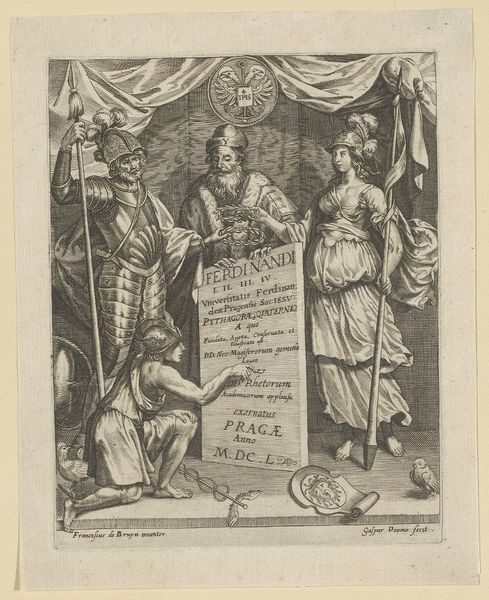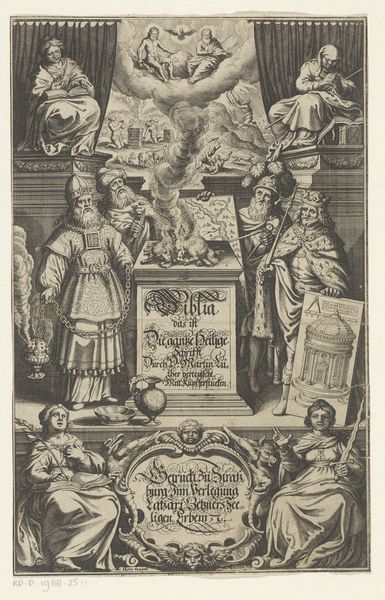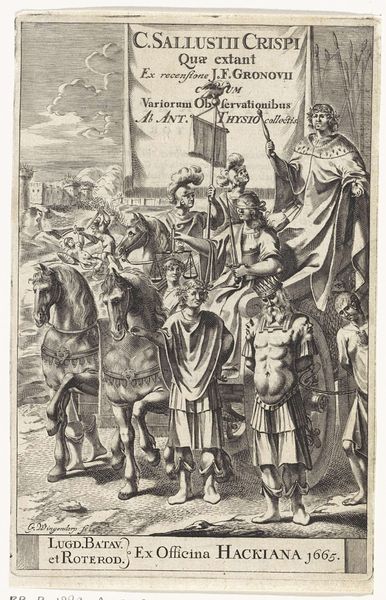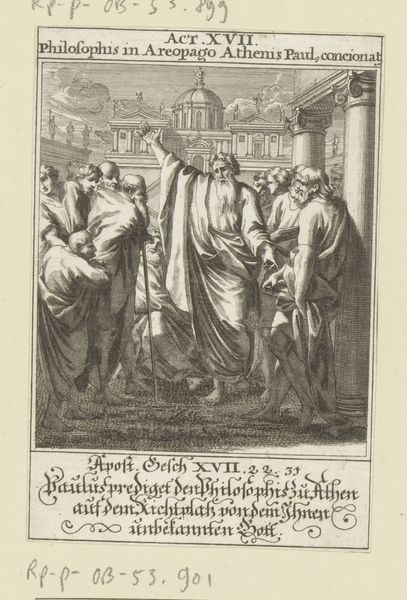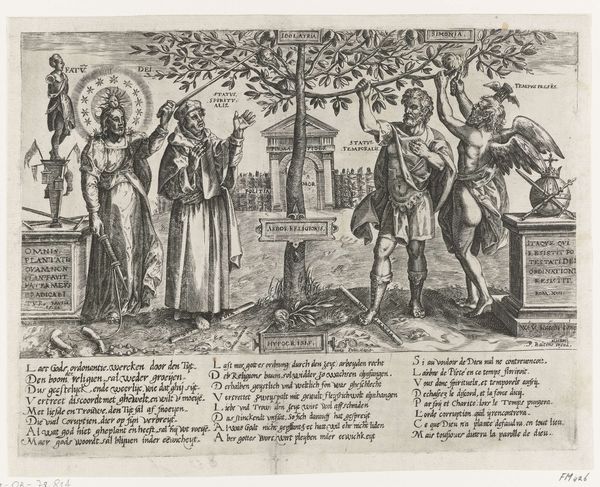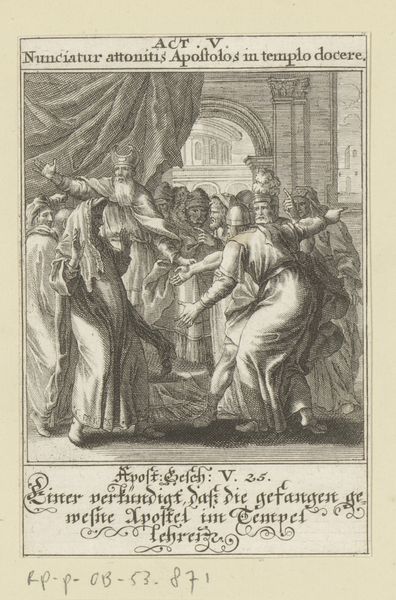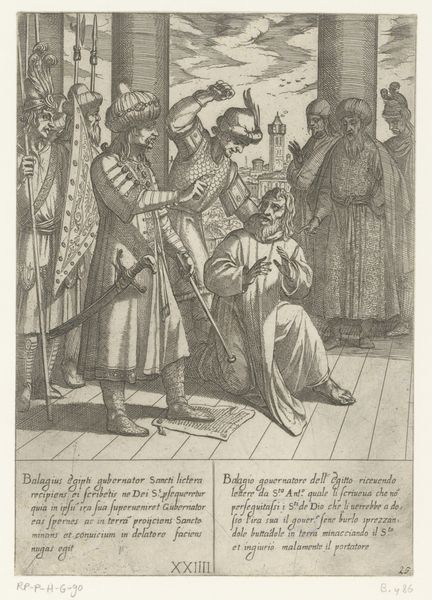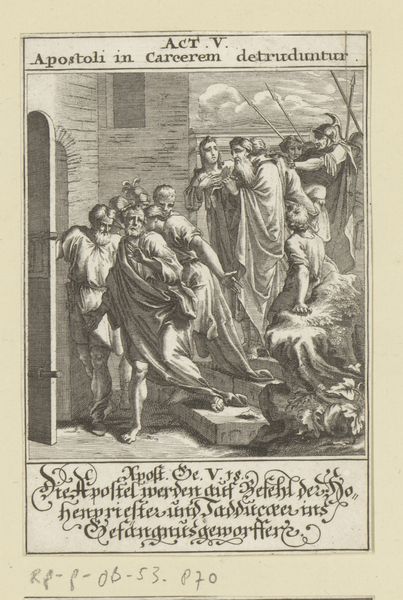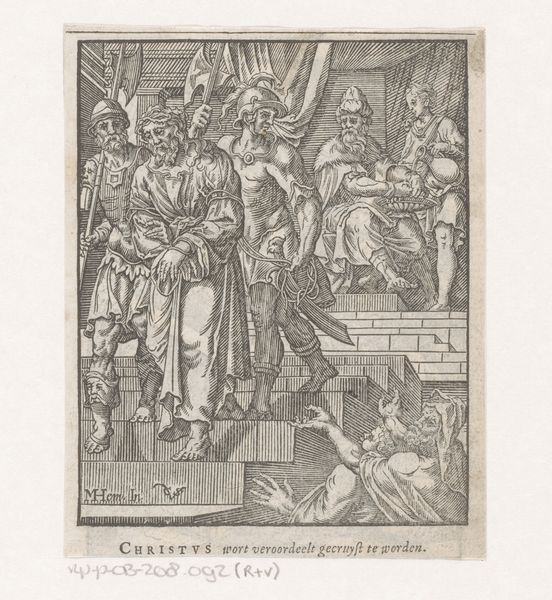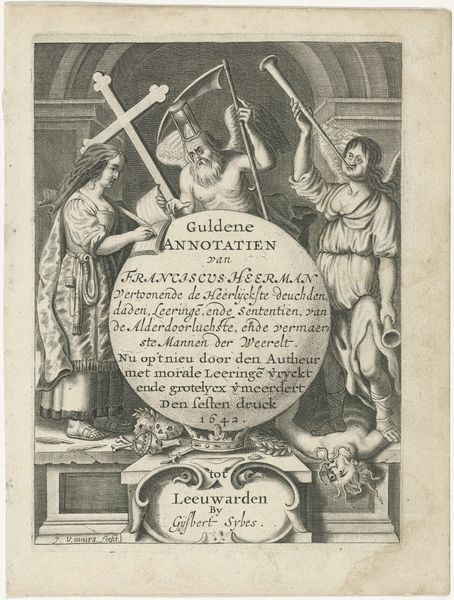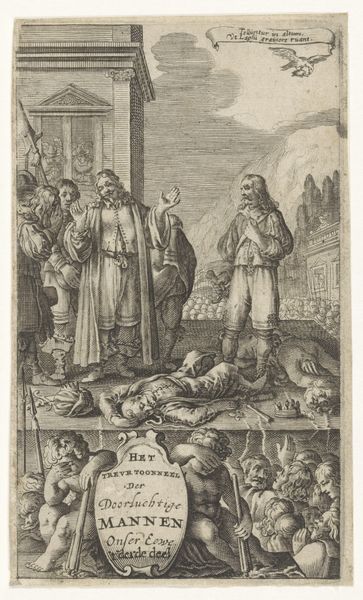
Dimensions: height 146 mm, width 108 mm
Copyright: Rijks Museum: Open Domain
Curator: This engraving, titled "Dodenstraf," meaning "The Death Penalty," was created by Conrad Meyer around 1650. The print on view here at the Rijksmuseum, presents us with an elaborate scene. What stands out to you initially? Editor: The stark contrast! The left teems with life, a bustling crowd emerging from a church, while on the right, death, in the form of a skeleton, reigns supreme in a desolate space. It's a powerful visual dichotomy. Curator: Indeed. Meyer masterfully utilizes line and shading techniques specific to engraving to heighten this effect. Observe the sharp lines defining each figure, the dense hatching creating shadow—note also the contrasting use of negative space for emphasizing spatial separation. Can we examine further the material implications of the printed surface when interpreting content here? Editor: Well, I immediately see a connection between that grim reaper figure, seated upon a barrel and surrounded by skulls, and the symbols he brandishes. That hourglass, held aloft, signals time running out. Even the scythe bears witness with 'CM,' likely signifying Conrad Meyer himself acknowledging the material act in representing death's timeless authority. Curator: Yes, and notice the crowd: church officials, possibly even royalty, walking straight into death's domain, suggesting a societal commentary— no earthly authority or virtue saves you in this world, while the very composition with left-to-right reading enforces our complicit involvement in the act of viewing, of coming to terms, and perhaps to peace, with mortality itself. How much do we actually invest into each engraved line representing not only each individual involved, but also how they are related on a larger level of representation. Editor: And above death, in that shadowy corner, we see a rooster, perched above, perhaps symbolizing the fleeting nature of earthly life and our carnal being, set within a scene littered with bones from what has passed on as material residue. The rooster, in Christian symbolism, is both life and hope and an association of the passion of Christ—a symbol within our collective memory and that very fact that allows it to remain relevant so many centuries later. Curator: Ultimately, Meyer offers a potent reflection on morality that, grounded in both process and iconic vocabulary, speaks across centuries. The act of repeated printing as if to disseminate, mass consumption allows an image and idea to live on perpetually. Editor: An enduring memento mori, reminding us, in vivid detail, that death comes for all, regardless of station.
Comments
No comments
Be the first to comment and join the conversation on the ultimate creative platform.

